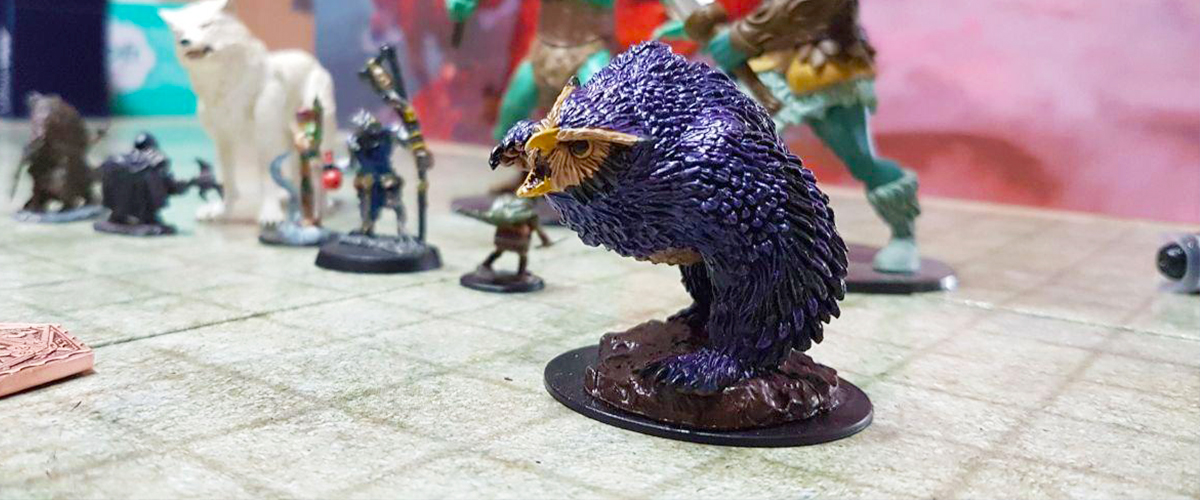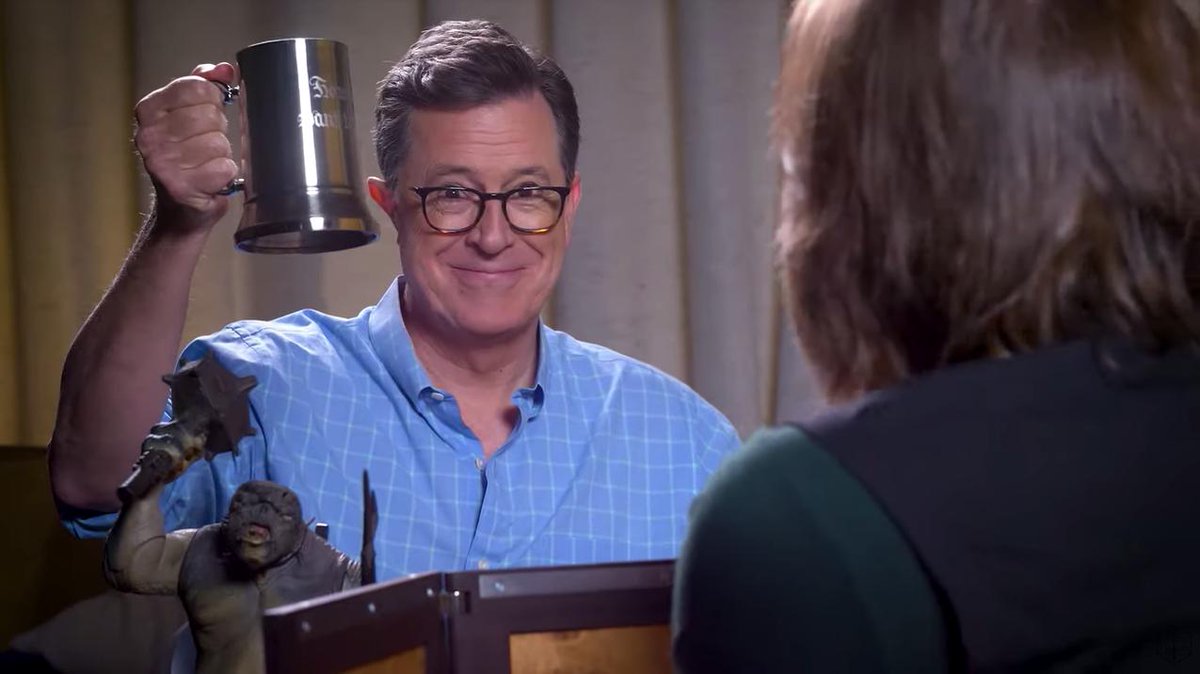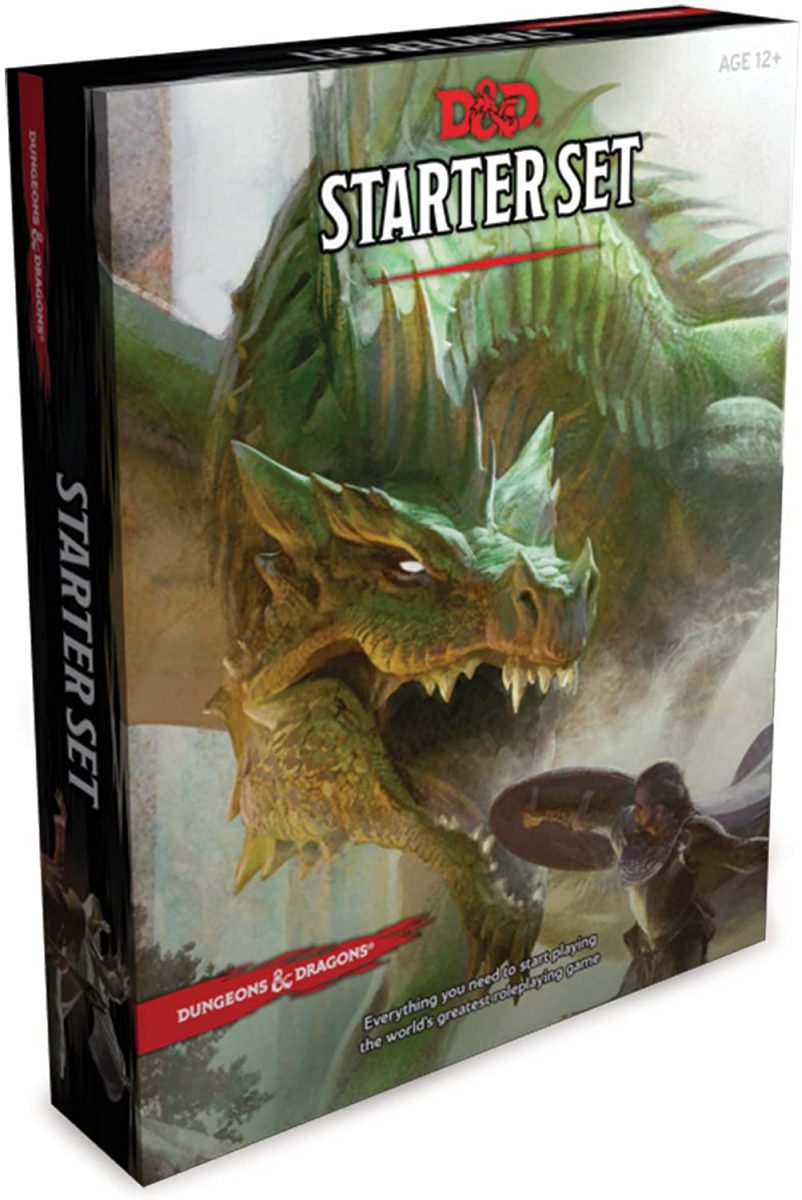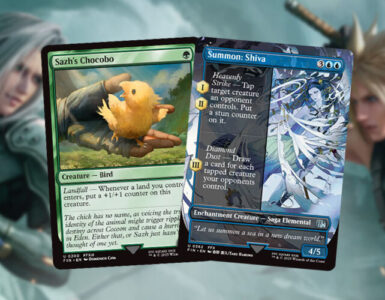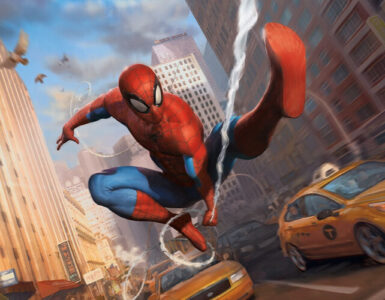If you’ve been in the geek space long enough, you’d most likely have heard of Dungeons & Dragons, or tabletop role-playing games in general.
Maybe you’ve watched that episode of Community or Big Bang Theory (or basically the whole of Stranger Things), and have seen your favourite characters sit around rolling dice, acting all geeky and speaking in the most cheesy ye olde English. Or you might have played the likes of Baldur’s Gate, Star Wars: Knights of the Old Republic or Divinity: Original Sin 2 on the PC, and have wondered what all those crunchy numbers mean as your characters swing their weapons and constantly end up in a “Miss!” result because their attack bonuses weren’t high enough.

Or you might have even seen some folks in real life gathered at a cozy spot in a McDonald’s – or even your relatives with their friends at home – with some pieces of paper scattered around them, rolling dice and speaking in funny voices. What does this all mean and why are you suddenly interested?
In any case, this guide is here to give you a run down as to what this game is all about, what makes it so popular and how you could get started rolling some dice with your friends, should your interest be piqued in any way.
What the hell is D&D?

So first thing’s first — Dungeons & Dragons is a tabletop roleplaying game (TTRPG or RPG for short), first created in 1974 by Gary Gygax and Dave Arneson. In this game, a group of players — usually four to six — gather around the table to tell a story together. In that story, the players, or player characters (PCs), pretend to play elves, dwarves, and all manner of fantasy races, taking on quests together, usually by plundering dungeons and other similar locales, and/or slaying dragons, and other beasts of equal danger.
Additionally, one other player takes on the role of Dungeon Master (DM). While the DM technically plays the game with the rest of the group, they assume the role of main storyteller, setting the scenes and narratives of each game, while also playing the roles of non-player characters (NPCs), monsters, and also doubles up as a rules referee to help facilitate gameplay, especially during combat and ability checks.
Sounds chunky, huh? Don’t worry, we’ll explain the DM role a little more later on. But this is essentially what each game of D&D is all about.
Why is it so popular?
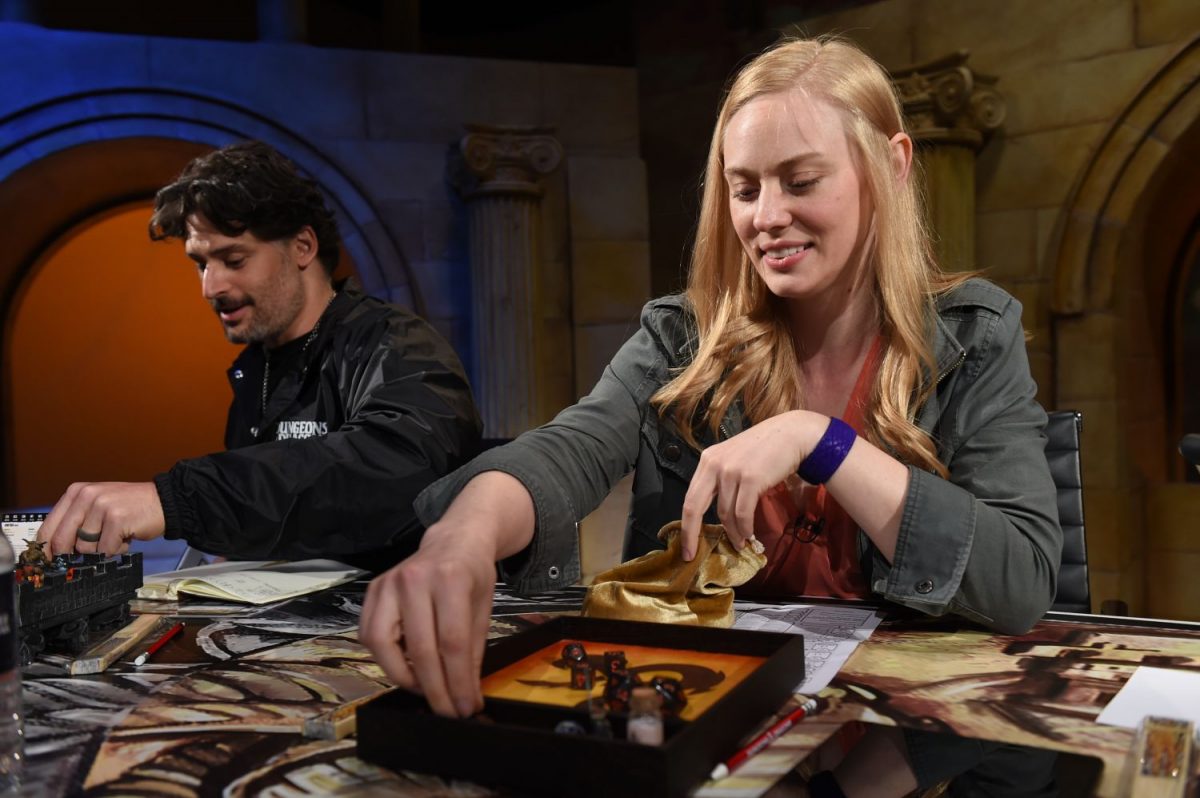
Ask anyone who’s played D&D at least once in their life and they could tell you many different reasons as to why this game has endured the test of time. But arguably the key ingredient to the longevity of D&D is the freedom to do whatever you want in this game. While video games have the ability to wow players with stellar graphics and gameplay, their innate programming means player agency will never be enough. Meaning to say, no matter how many sliders or options you include in character creation, or how many possible dialogue options one might be privy to in quests, someone somewhere will ultimately be dissatisfied with the lack of a certain option somewhere in the game.
In contrast, in a game of make-believe like D&D, you have the option of designing a character to your liking, and approach quests and encounters in any way you like. But of course, sometimes too much freedom is also a little unhealthy, which is where the DM comes into play. He/She will help players figure out how it might be possible to play as a dragon, who is an invincible god of this world, with armies and infinite wealth at your disposal at level 1. Unlikely but boundaries must be set.
This freedom to create and interact with the world in D&D is one of the main reasons why this game has inspired many Hollywood actors, directors and other celebrities to get to where they are creatively. Here are some games of some very familiar faces you might know, just in case they somehow snuck under your radar over the years:
Not convinced that celebs are picking up this game and rolling dice at the table? Here’s a list of names for even more of a reference (and again, this is just scratching the surface — we’re pretty sure many more celebs are closet D&D geeks):
- Dwayne Johnson
- Wil Wheaton
- Kevin Smith
- Jon Favreau
- Dan Harmon
- Joss Whedon
- Cole & Dylan Sprouse
- Tim Duncan
- Brandon Routh
- Paul “Big Show” Wight
- David Benioff
- D.B. Weiss
- Tom Morello
- Gerard Way
- Vince Vaughn
- Chris Pratt
- The Russo Brothers
D&D in pop culture
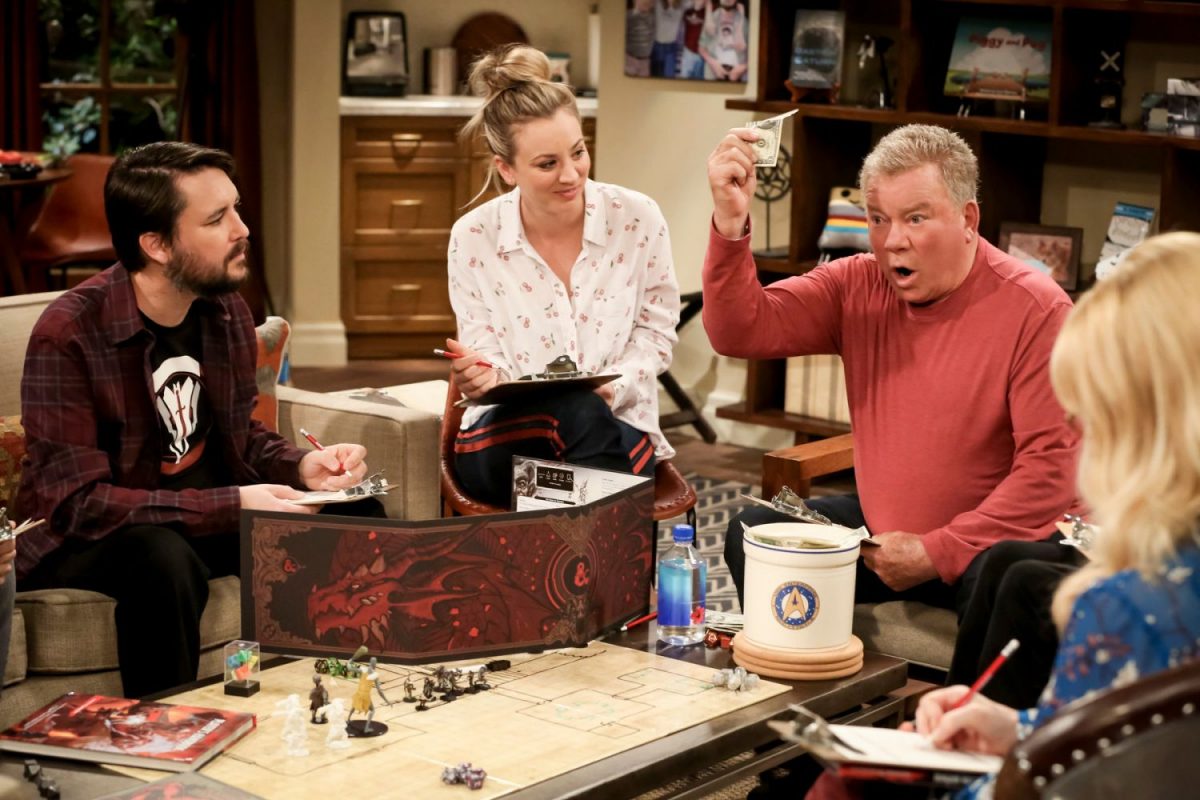
In addition to these celebs, there are also a ton of movies, video games and TV shows that have been inspired by D&D in one way or another. In reality, there are just too many to list, but here are some that you might recognise:
Movies
- The entire MCU
- Actually, also the DCEU
- The Lord of the Rings trilogy
- And, by extension, The Hobbit trilogy
- Star Wars
- Onward
- Ready Player One
- Rampage
- Clash of the Titans
- Warcraft
- The Dark Tower
TV Shows
- The Witcher
- Stranger Things
- Game of Thrones
- Episodes of Community, Big Bang Theory, Futurama, South Park, iZombie
- Adventure Time
- Rick & Morty
- She-Ra and the Princesses of Power
Video Games
- Baldur’s Gate
- Star Wars: Knights of the Old Republic
- Mass Effect
- World of Warcraft
- The Elder Scrolls franchise
- Divinity: Original Sin
Commonly-asked questions about D&D:
- How long do games last?
- Usually, a typical session of D&D lasts for about 2 – 4 hours. However, most games are part of an ongoing storyline, so players normally schedule regular games on a weekly or monthly basis to see the story out to its end.
- Short campaigns can run for as long as about 6 – 8 sessions, while long ones can go for as long as the group wills it (there’s even a group that has been playing the same campaign for nearly 40 years now!).
- Of course, if players can’t commit to such a regular fixture, there is always the option of a one-shot adventure, that lasts for, well, an evening or afternoon.
- Since it’s a game, how do I win at D&D?
- Actually, there is no fixed win condition in D&D. Treat it as a season of a TV series, where the players and DM run the story through its course.
- To many D&D players, “winning” the game is simply by having fun at the table, because it is ultimately a game where you and your buddies hang out with one another, making fools of one another and telling stories together.
- I see there are so many editions of D&D out there. Which should I get started on?
- D&D is now in its 5th edition (5e), which first launched in 2014. Of all the editions out there, 5e is arguably the most accessible to newcomers, and is the most-played edition of the game to date. The previous editions are still being played, though they’re currently discontinued.
- The second most popular edition is 3e, and later its “patched” version 3.5e, which launched in 2000 and 2003 respectively. This system offers a ton more flexibility, but that strength is also its greatest weakness, as it can oftentimes overwhelm players with too many options due to the sheer amount of books they have to buy. That said, it is still very popular among veteran players.
- Ultimately, you and your friends pick the version you want to get started on D&D the most, as there is no “best” or “worst” in the franchise.
- Dungeon masters? Is this a sex thing?
- It’s not that activity we’re talking about, but yes, those types of dungeon masters exist. Just not in this game.
- Can I play as a dragon, who is an invincible god of this world, with armies and infinite wealth at my disposal at level 1?
- Uh, sure. If your DM allows that. Good luck finding one that will cater to your very specific needs. In all seriousness, D&D is ultimately a team game where no one player is more special than the other, and everyone uses their individual talents and strengths to overcome obstacles as a group.
- Also, if players wanted to start out as all-powerful beings, they can always be the DM!
Wow! Colbert plays it too? Okay, I’m sold. How do I play this game?
In its most simple form, a typical game of D&D goes as follows:
- The DM describes the scenario
- The players decide what to do in response the scenario
- The DM then asks players to roll dice to determine whether they succeed or fail in their actions
- Rinse and repeat
It’s honestly really that simple. Of course, since there is role-playing involved, players and DMs usually take to describing their actions in character, and even speaking in character. And despite what you may see in the media, funny voices are not mandatory, and just acting in character is enough to add to the immersion levels of the game. There also will be combat, where it gets a little more technical, but the steps above are really the baseline of any D&D game.
Just to help you out a little more, here’s what a typical game of D&D looks like, in text format:
DM: You adventurers find yourselves standing at a crossroads in the woods, with two paths branching off into the darkness, one to the east and the other westward. What do you do?
Zacky (the Ranger): I’ll scout ahead first using my darkvision.
DM: Roll for Perception.
Zacky: 15. Okay, what do I see?
DM: There seems to be a faint light at the end of the western path, while the eastern path yields a faint scratching sound.
Germaine (the Wizard): I vote we go towards the light!
Marion (the Cleric): I’m not sure, sounds like a trap.
Zacky: I’ll be the tiebreaker then. Light it is!
DM: Okay, so you head toward the light. The light brightens ever so slightly as you edge closer to it. Eventually, you come across a glade covered in luminous fungi that glow iridescently in the night. In the middle of the glade is a sleeping drake. What do you do?
Marion: I knew this was a trap. Should we just turn back?
Zacky: No way, man. I say we sneak past it ‘cause I smell treasure!
Germaine: Yup, I agree!
DM: Very well. Roll Stealth, please.
Zacky: Natural 20!
Germaine: 4. Oh nooo!
Marion: 12.
DM: It looks like you tripped over your robes, Germaine. You fall face-down in front of the drake’s head with a resounding thud. Suddenly, its eyes spring wide open. Angered that you guys have roused its slumber, it snarls angrily, getting ready to lunge at you! Roll for initiative!
In essence, gameplay in D&D is a constant conversation, and the fun of it is both in acting in character, and letting the dice fall as they may.
There is also character creation, which is also another essential (albeit time-consuming) part of D&D. Players typically start by picking a combination of fantasy race (human, elf, halfling, dwarf etc.) and class/job (Fighter, Cleric, Monk, Ranger, Wizard etc.). Then, they either roll dice or assign points to determine their starting attributes — Strength (STR), Dexterity (DEX), Constitution (CON), Intelligence (INT), Wisdom (WIS), and Charisma (CHA) — based on the class they picked. From there, players will then form a backstory for their character, pick a name (and adopt a voice or accent if they want to), and play can begin.
What are all these differently-shaped dice?

Speaking of which, you might be wondering just exactly what these dice represent. There are seven main types of dice used in D&D. They are (from left to right in with reference to the picture above, and with their abbreviated terms):
- 20-sided die (d20)
- 12-sided die (d12)
- 10-sided die with tens (percentile die, or d100)
- 10-sided die (d10)
- 8-sided die (d8)
- 6-sided die (d6)
- 4-sided die (d4)
Of all these dice, the d20 is the most important die in the game, as it is the main go-to for virtually all the rolls players and DMs have to make. Typically, players will roll the d20, after which they’ll also add modifiers as indicated on their character sheets for the total value of the roll. The other dice represent different tiers of damage or hit points players do or receive. Large weapons like greataxes use a d12, while smaller weapons like daggers use a d4. Conversely, physically-stronger classes like the Barbarian use a d12 to roll for their hit points when they level up, while Wizards and Sorcerers use a d6 for their health.
The Dungeon Master
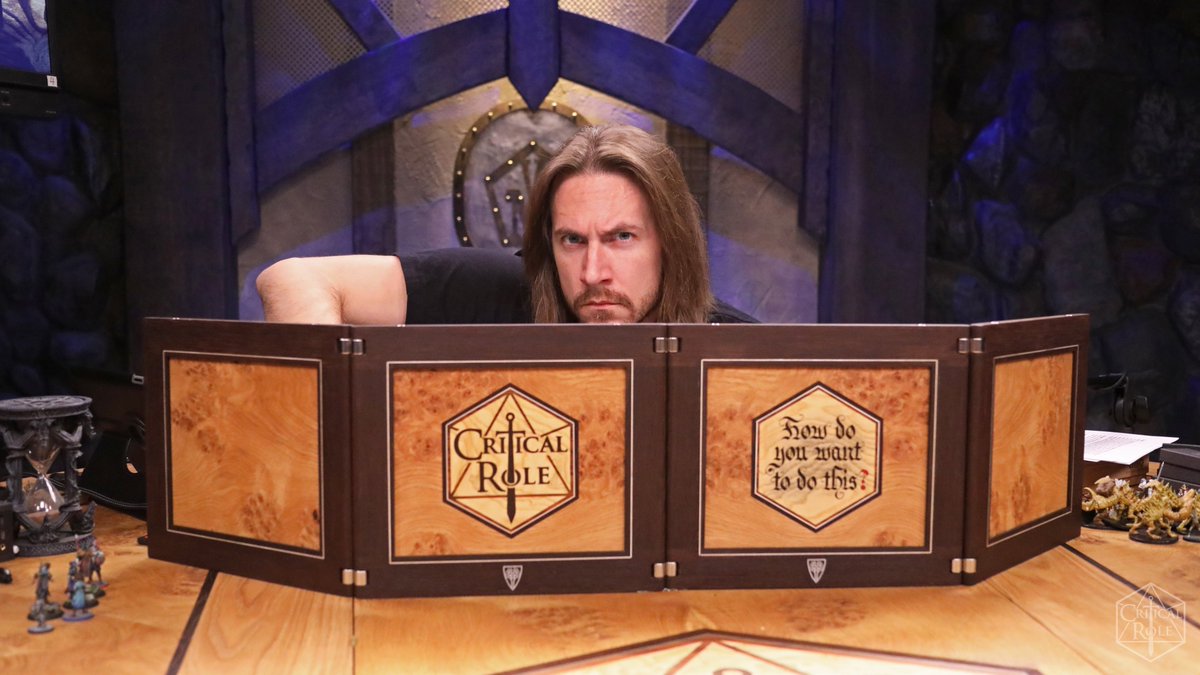
Speaking of which, this role gets its own little section in this guide, as it is the key cog in any D&D game. So we’ve touched on how the DM is the one setting the scenario for each game, controlling NPCs and monsters and reacting to players’ actions and crafting the narrative as a result of said actions.
Without the DM, there is no game, simply put. Admittedly, the role of Dungeon Master is a complex one, as it requires the person behind the DM screen to play the role of storyteller, referee, and player all at the same time (and, by extension, cat herder, as they’re usually the one organising games).
As such, it’s recommended that a player who’s more experienced in the game to take up the mantle and ease new players into the whole shebang. That said, for those who prefer to tell stories, see things from a birds-eye view, and create fictional worlds out of nothing, then by all means take on the DM role. That just means the one doing so has to do a little bit more homework, by learning the rules a little more intimately, and also by planning storylines and NPCs ahead of each session. It’s a time-consuming role, but a thoroughly rewarding one nonetheless.
How do I get started?
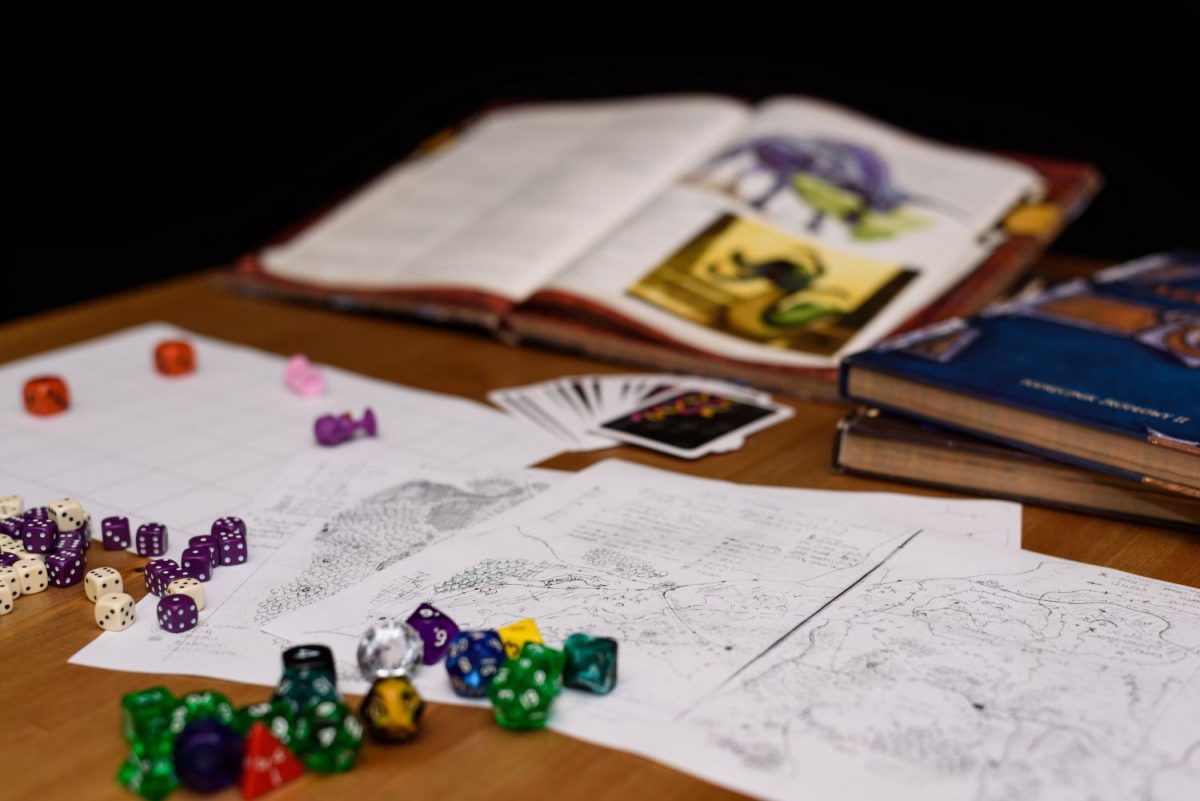
Before the Digital Age, players typically could only join or start D&D games by word of mouth, and by inviting players to play physically in their homes. That’s still a thing, of course, as people still discover D&D groups via water cooler talks in the office and the like, or word sometimes gets spread via text.
But if none of your friends in your social circle play, or aren’t keen, there’s always the likes of Meetup.com that has dedicated pages that help bring players together. Reddit is also another popular way for folks to get acquainted with potential D&D groups, so the options to find players are nigh-endless these days.
Organised Play
For something a little more, well, organised, there is organised play for D&D, much like how events for card games like Magic: The Gathering or Yu-Gi-Oh! take place every now and then. For D&D, it’s called the D&D Adventurers League (DDAL), which lets folks play and run games at their own leisure, without necessarily having to form a regular group. Essentially, players play one game with one group on one day, then can hop on over to another group on another day.
How this works is that players make their own character using the stipulated rules and guidelines for DDAL, and can head over to any Friendly Local Game Store (FLGS), or even online to play games with other folks of a similar level range. After each game, you record your progress on a logsheet, which can be checked by other DMs if you’re joining another table.
It’s a pretty simple system (sans the little bit of paperwork), and it’s essentially a less commitment-heavy way of playing D&D that lets players with not-so-fixed schedules get in on the action more easily.
Materials
To get started with an in-person D&D group, one needs to grab a Dungeons & Dragons Starter Set, which contains the basic rules of the game, five premade character sheets, and a prewritten starter adventure (and a really good one at that) for both players and DMs to literally pick up and play.
If players want to try their hand at building their own character and don’t want to restrict themselves to the limited options in the Starter Set, the Dungeons & Dragons Essentials Kit will also come in handy. That comes with five empty character sheets, including a handy guide on making your first character, as well as an adventure for the DM to get started as well. Additionally, it goes the extra mile to provide paper cut-out miniatures and some small paper maps to provide some visual aid at the table.
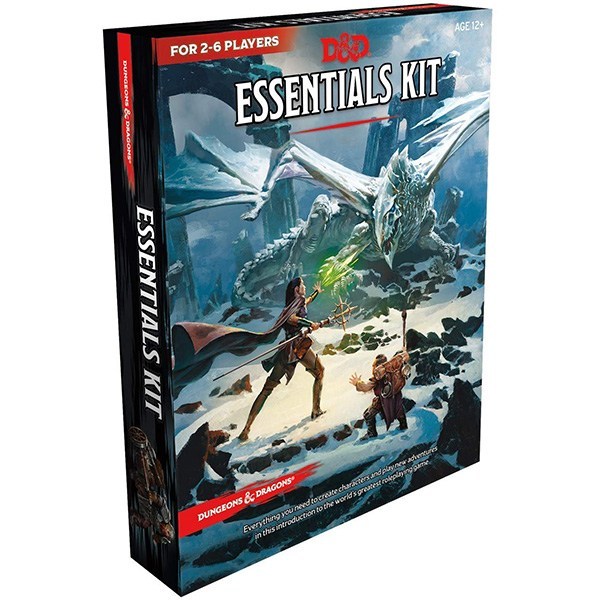
For those that want to dive into the deep end, grabbing a Player’s Handbook is essential to learning the fundamentals of the game. For DMs who want to try their hand at creating their own campaigns, the Monster Manual and Dungeon Master’s Guide are essential to doing so, as they contain in-depth information on monsters, magic items, and how to outline basic campaigns in general.

If creating their own campaign seems too daunting, DMs can also consider the various official D&D hardcover adventures, which typically take players from low to high levels. To date, there are 11 hardcover adventures, each of which explore different themes and subject matters. Wanna fight demons, vampires, giants, or good ol’ dragons? There’s something for everyone, and Wizards still has more coming in the pipeline.
The single set of dice might be a tad pathetic for a group of, say, four or five, but there are dice sets one can buy online to get started. The Chessex Pound-O-Dice is a great option for a group of players to pool together a literal pound’s worth of random dice to get their campaign started. It may not come with specific sets of dice, but it should provide each player with the required amount to get them started.
Additionally, there are also maps and miniatures that you can consider, though they are completely optional and running the game via theatre of the mind (imagining things and acting out your actions) is totally feasible when starting out. Otherwise, if you feel having a visual medium aids in gameplay, then using graph paper and scrounging up anything from LEGO Minifigs to even gummy bears and Hershey’s Kisses to represent PCs or monsters.

In any case, if you’re willing to part with some coin, the following options will go a long way for your D&D endeavours. For maps, the likes of the Chessex Battlemat (wet-erase markers) or the Pathfinder Flip-Mat (dry-erase markers) are solid starting options. For miniatures, there is a whole range to consider. You can opt for some random fantasy miniatures from Amazon, or even custom miniatures by HeroForge, though the latter option is a considerable step up in terms of price.
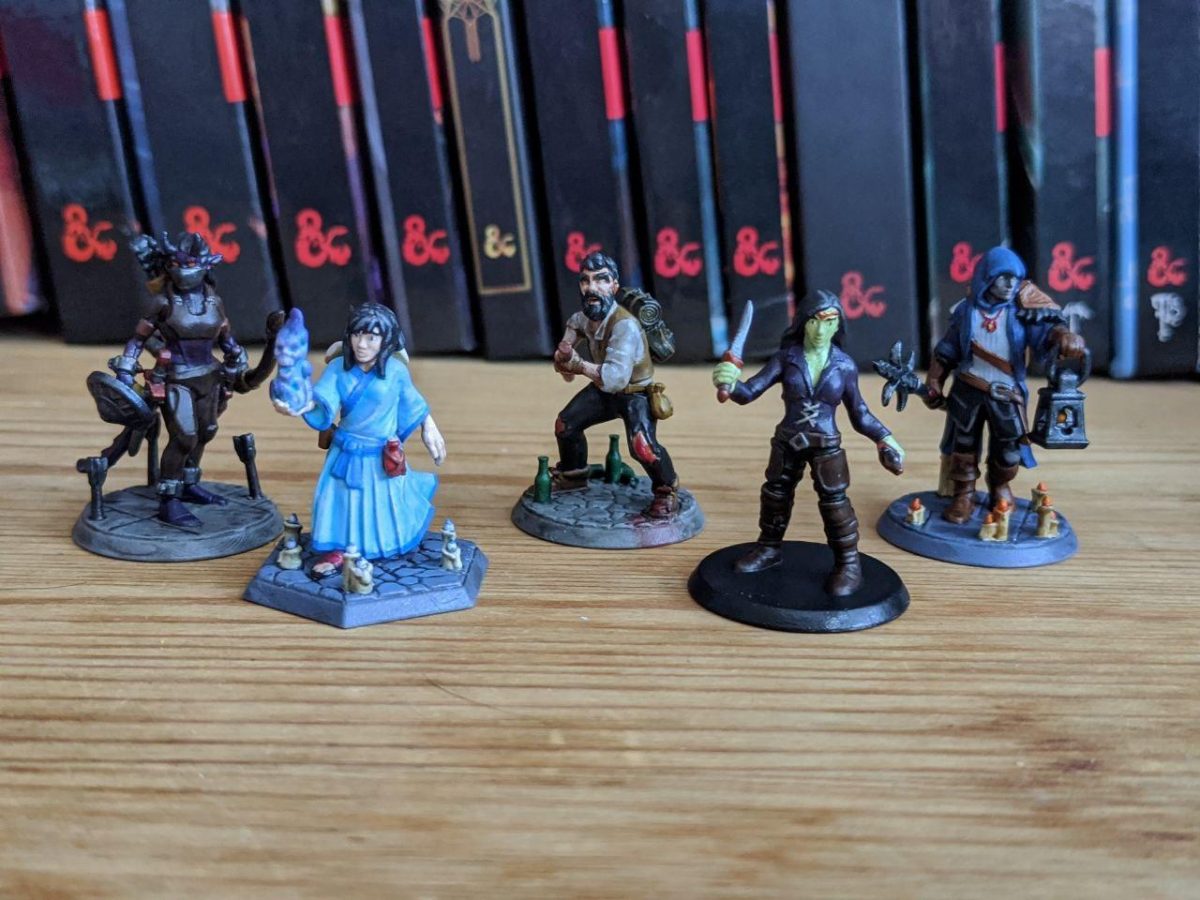
For those that don’t want the burden of physical books, purchasing them online via D&D Beyond might be a better option. This is Wizards of the Coast’s official online resource for the 5th edition of the game, and is extremely easy to navigate. Players can also use D&D Beyond to create and store their characters and use that for their games, if they don’t want the hassle of using pen and paper.
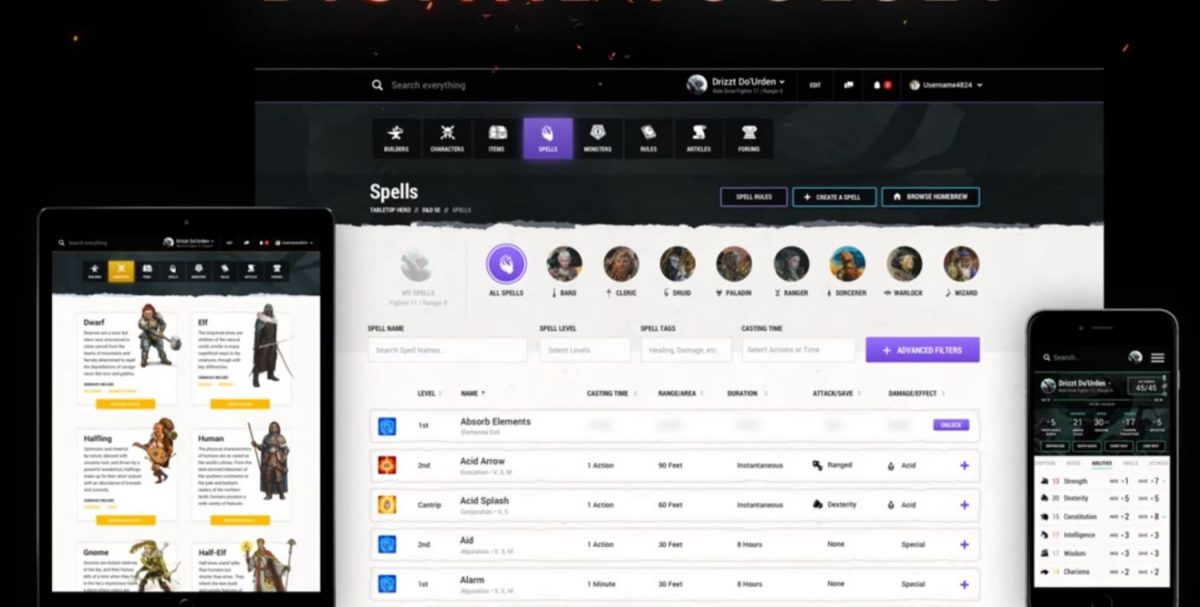
Another very useful online resource for DMs is the Dungeon Masters’ Guild, which features a host of both official and unofficial content, ranging from adventures, to custom character sheets, and homebrew player options, with which to gorge upon. Some of the materials here are Pay What You Want (PWYW), meaning you can get them for free, or support the developer by including a small token fee as part of your purchase. If you’ve gotten the hang of creating homebrew stuff, you can also upload your creations there, and maybe even make a buck or two out of it.
Can I play D&D online?
In short, you absolutely can!
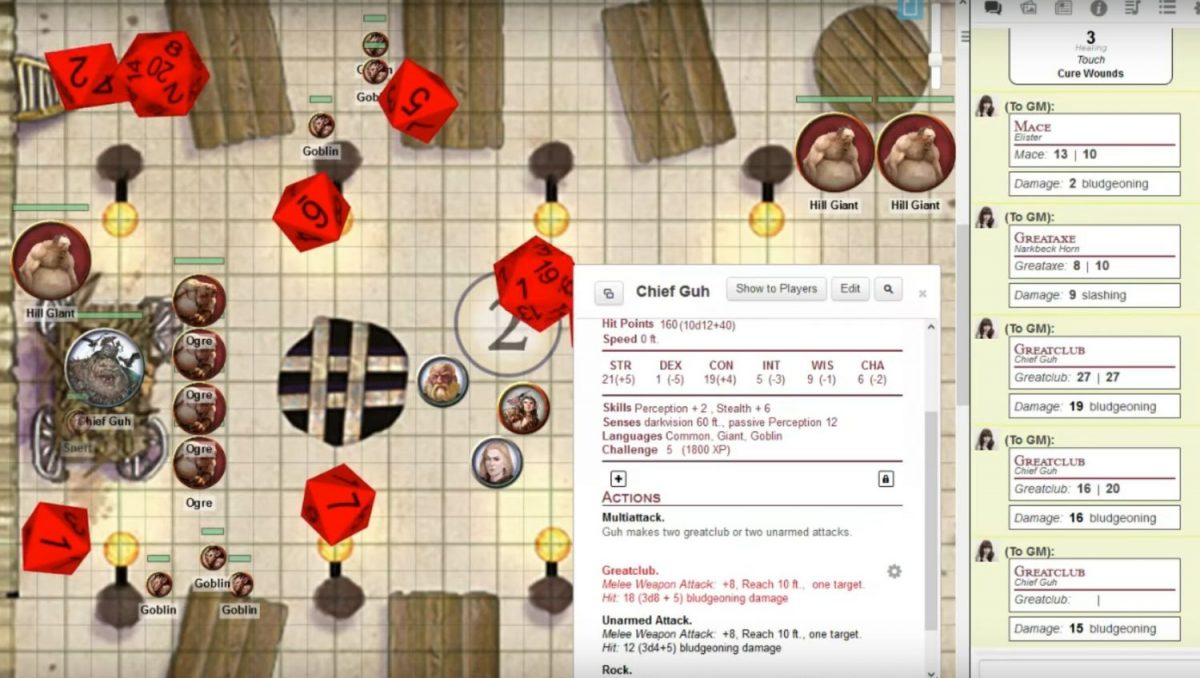
For those who want to start playing and are on the fence about forking out some cash, there are even online sites dedicated to finding and organising D&D games today.
Roll20 comes to mind as the most popular option. Here, players don’t even need to roll physical dice, as they will be using the site’s virtual dice roller to do so. The character sheets here instantly add modifiers to your rolls, which speeds up gameplay quite a bit. And the best part is that it’s totally free for both players and DMs, and can be used in conjunction with other free online video chat systems out there.
Other online platforms with which to play D&D include Fantasy Grounds and Astral Tabletop.
Where can I learn to play D&D?

While the best way to learn D&D is to play it, not everyone will have the confidence to dive right into the deep end of things. Thankfully, there are a ton of D&D live streams found on YouTube or on Twitch available to watch these days. Live play sessions are by far the most accessible way to learn D&D, as they are usually accurate representations of real-life games. Additionally, many of the players in these shows are often first-timers, where the discerning audience can literally learn the game alongside them.
One of the most popular shows include:
- Critical Role, which includes voice acting maestro Matthew Mercer, who is joined by other nerdy voice actors from video games and animation who sit around and play D&D every Thursday.
- UK-based High Rollers, which is run by Mercer’s fellow DM and longtime friend, Mark Hulmes.
- Penny Arcade’s Acquisitions Incorporated, a comedy-centric game which is run by one of the official D&D lead designers, Chris Perkins
- Dropout’s Dimension 20, a game consisting of comedians and popular game streamers which is led by Brennan Lee Mulligan
- Relics and Rarities, a game run by Daredevil and The Punisher star Deborah Ann Woll
There are also podcasts that players can tune into if they want something to listen to, such as The Adventure Zone, a game which is run by comedian Griffin McElroy for his two sons and father in a really lighthearted and comical campaign. The aforementioned Critical Role also comes in podcast format, too.
For DMs who want to hone their craft, there are channels and podcasts specifically catered to helping up your Dungeon Mastering. They range from discussing different campaigns, to running specific monster types, to even handling different types of players.
To name a few, these include (but are not limited to):
And that’s our (not so) brief guide for the wonderful world of Dungeons & Dragons. We certainly hope this guide is detailed enough to get you up to speed with the basics of the game. Now that you’ve learnt a little more about D&D, roll for initiative and spread the word to your friends about it!
Marion has a serious RPG addiction. Sometimes it bleeds into real life; he forgets to sleep because he thinks he has a Witcher’s body clock. Forgive him in advance if he suddenly blurts out terms such as “Mind Flayer” and “Magic Missile”, because never once does he stop thinking about his next Dungeons & Dragons game.

